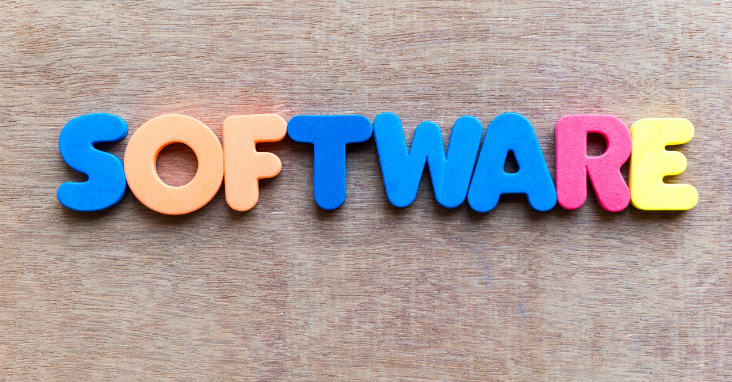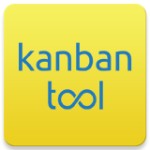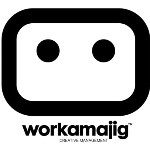Ever been in a group project where everything just… clicks? You’re laughing at inside jokes, seamlessly completing tasks, and producing top-notch high performing team work with ease. Conversely, have you been stuck in a whole team project where it feels like you’re wading through molasses, and miscommunications reign supreme? What differentiates these experiences? The answer, my friends, is team dynamics.
What are examples of effective team dynamics? Effective and positive team dynamics manifest as open and honest communication and communication, clear roles, mutual respect, shared vision, adaptability, and consistent, constructive feedback.
Picture this: It’s a radiant Monday morning, and the city’s slowly awakening to the symphony of its routine hustle and bustle. You walk into your office, the fragrance of freshly brewed coffee teasing your senses. Your workspace, whether it’s a corner office, an open-plan desk, or even the cozy comfort of your own home, beckons.
The chatter among colleagues isn’t the predictable murmur about the woes of Monday blues. Instead, there’s a contagious enthusiasm in the air. People are leaning over their cubicles, engaging in animated discussions, sketching out ideas on whiteboards, and sharing light-hearted laughs over the weekend tales. It’s not just any ordinary start to the week; there’s an unmistakable electric charge in the atmosphere.
Now, consider the teams you’ve been a part of – those groups that, when united, are more than the sum of their parts. When everyone’s in sync, working feels less like a chore and more like an orchestrated dance. Every member and entire team intuitively knows their steps, the tempo, and the direction. Meetings are no longer dreary obligations but become platforms of innovation. Ideas flow seamlessly, questions lead to discoveries, and challenges are eagerly tackled as a collective.
In stark contrast, remember those teams that felt like a puzzle with mismatched pieces. The energy in such environments is often tense, with every day bringing its own set of hurdles. Communication breakdowns encourage open communication, clashing egos, and missed deadlines are the norms. Members walk on eggshells, avoiding confrontations and dreading constructive feedback. The overarching team goals become murky, lost in a sea of personal agendas.
So, what’s the magic ingredient that differentiates these two scenarios? How does one sports team effortlessly soar to great heights while the other struggles to even take off? The secret sauce, dear reader, is nestled in the realm of team dynamics.
Understanding and harnessing effective team dynamics can transform a group of individuals into a powerhouse of productivity, innovation, and collaboration. It is a critical component of dynamic team performance that’s the bridge between collective mediocrity and shared excellence.
Journey with me as we explore the intricacies of effective team dynamics, uncover its pillars, and discover how you the team leader can cultivate a harmonious, high-performing, cohesive team. Whether you’re a seasoned team leader yourself, a team member, project manager, or just someone curious about the inner workings of successful groups, there’s something in here for you. Let’s dive deep into the world of collaborative brilliance!

The Pillars of Effective Team Dynamics
Open Communication
In any relationship, effective communication here is key to successful team. In a professional development or team setting, it’s the bedrock.
Transparency: Everyone is open about their strengths, weaknesses, and concerns.
Active Listening: Team members not only speak but also genuinely listen to each other.
Conflict Resolution: Disagreements are a natural part of any team, but it’s how they’re addressed that matters.
Clear Roles & Responsibilities
Knowing one’s role in a whole team’s success is pivotal.
Defined Responsibilities: Everyone knows their duties and what’s expected of them.
Accountability: Team members take ownership of their tasks and outcomes.
Mutual Respect
Respect is the foundation of trust.
Valuing Contributions: Every team member’s input is valued and considered.
No Blame Game: Mistakes are viewed as learning opportunities.
Shared Vision
Teams should row in the same direction.
Unified Goals: The team understands and commits to shared objectives.
Collective Decision-making: Decisions are made with everyone’s input and consensus.
Adaptability
Change is inevitable. Adapting to it? That’s a choice.
Embracing Change: Teams see change as a chance to evolve and grow.
Continuous Learning: There’s always something new to learn, and effective teams embrace that.
Consistent Feedback
Feedback is the breakfast of champions.
Regular Check-ins: Regular feedback sessions help teams recalibrate and improve.
Constructive Criticism: Feedback is aimed at improvement, not pointing fingers.

Software Tools to Boost Team Dynamics
In today’s digitized world, the significance of utilizing the right software tools to bolster and enhance collaboration, encourage team members and leaders improve team dynamics, cannot be overstated. With remote work becoming increasingly prevalent and teams often spread across different geographies, these tools act as the virtual glue binding team members together. Let’s embark on a journey to explore some software marvels that promise to enhance group development, collaboration, communication, and overall team dynamism.
Slack: The Digital Watercooler
Imagine a bustling office watercooler, where casual chats intermingle with work discussions. Now, turn it digital. That’s Slack for you.
Channels for Everything: From projects to interests, create specific channels to keep conversations organized.
Direct Messaging: Have private conversations or form smaller groups for focused discussions.
Integration: Slack plays well with other tools, bringing everything from Google Drive to Trello under one roof.
Customizable Notifications: Stay updated without being overwhelmed.
Key Points:
Slack promotes spontaneous conversations and structured discussions alike.
A plethora of integrations ensures all tools and updates are in one place.
Tailored notifications ensure you’re in the loop without drowning in alerts.
Trello: Visualizing Tasks and Progress
Managing tasks in a team can often feel like juggling on a tightrope. Trello brings the balance you crave.
Boards, Lists, and Cards: Organize tasks visually with boards for projects, lists for stages, and cards for tasks.
Collaboration in Real-time: Team members can comment, assign, and update tasks, ensuring everyone’s aligned.
Integration Power: Incorporate apps and power-ups to enhance functionality.
Customizable Workflows: Trello’s flexibility allows for workflows tailored to your team’s needs.
Key Points:
Trello’s visual approach simplifies task management.
Real-time collaboration keeps everyone on the same page.
A myriad of integrations and customizations lets you make Trello truly yours.
Zoom: Bringing Faces to Names
In a world where in-person meetings are becoming rarer, Zoom steps in to bridge the distance.
High-Quality Video Conferencing: Whether it’s a one-on-one or a team huddle, Zoom’s video quality remains top-notch.
Screen Sharing: Collaboratively work on documents or presentations in real-time.
Breakout Rooms: Split your larger meeting into sub-groups for focused discussions, then reconvene.
Recording and Transcription: Missed a meeting? Catch up with recordings and transcriptions.
Key Points:
Zoom’s video conferencing replicates in-person interactions.
Features like screen sharing and breakout rooms enhance collaborative efforts.
With recordings and transcriptions, you never miss out on crucial discussions.
Honorable Mentions
While Slack, Trello, and Zoom are giants in the collaborative software space, there’s a constellation of other tools out there. Tools like Microsoft Teams for integrated office collaborations, Asana for intricate project management, and Miro for brainstorming on a digital whiteboard all deserve a nod for their contributions to healthy work environment and positive work environment that, promote collaboration, and improving team dynamics.
Remember, the best tool is the one that fits seamlessly into your sales team’s workflow and fills a genuine need. It’s less about chasing the newest shiny tool and more about finding the right fit that augments your sales team, members work it with sales team’s strengths and addresses its challenges.

FAQs on Effective Team Dynamics
The concept of fostering positive team dynamics, group dynamics, and group dynamics, while fascinating, often raises a myriad of questions. These questions span from the fundamental to the nuanced, reflecting a genuine desire to understand and enhance teamwork. Here, I’ve curated and addressed some of the most frequently asked questions to further illuminate this intriguing subject.
What exactly is ‘team dynamics’?
Team dynamics refers to the unconscious, psychological forces that influence the direction of a team’s behavior and performance. Think of it as the underlying currents in the sea of teamwork—sometimes propelling you forward, other times pulling you under. It encompasses patterns of communication, decision-making, power, negative and positive team dynamic, dynamics, bad team dynamics, and conflict resolution.
Why are team dynamics so crucial?
Teams are integral to organizational success. Effective communication and strong team dynamics ensure:
Streamlined Communication: Efficient exchange of ideas and feedback.
Enhanced Collaboration: Unified efforts towards a shared goal.
Increased Productivity: Fewer conflicts lead to less wasted time.
Elevated Morale: Positive dynamics foster a more satisfied and motivated team.
How can we identify poor team dynamics?
Warning signs include:
Communication Breakdown: Silence, or worse, gossip becomes prevalent.
Low Morale: Team members seem disengaged or frequently frustrated.
Stagnant Productivity: Tasks take longer, and deadlines are often missed.
High Turnover: Frequent departures might hint at underlying issues.
What roles do personalities play in team dynamics?
Every individual brings a unique personality to the table, influencing how other team members feel trust whether they can communicate effectively, collaborate, and respond to challenges. Recognizing and appreciating these differences can lead to professional development of a more harmonious and effective team, ensuring that strengths are leveraged and weaknesses supported.
Can remote teams have effective dynamics?
Absolutely! While the landscape might differ, the principles remain the same. Open communication, clear team goals, mutual respect, and the right tools (like Slack, Zoom, or Trello) can ensure remote teams are just as dynamic as their in-person counterparts.
How can team leaders foster positive dynamics?
Leaders play a pivotal role. They have leadership skills that can:
Set Clear Expectations: Clarify roles, responsibilities, and goals.
Facilitate Open Communication: Encourage feedback and discussions.
Invest in Team Building: Activities that foster trust and camaraderie.
Lead by Example: Display the values and behaviors you wish to see.
Are conflicts always a sign of poor dynamics?
Not necessarily. While consistent, unresolved conflicts within software development team are concerning, occasional disagreements can spark creativity continuous improvement and innovation. The key is in how conflicts are managed and resolved.
How often should teams assess their dynamics?
Regularly. Just as a car needs periodic check-ups, teams benefit from frequent introspection. Whether it’s through formal reviews regular team meetings or casual discussions, understanding the state of your team’s dynamics is crucial for continued success.
Do all high-performing teams have positive dynamics?
While there might be exceptions, a strong correlation exists between the group members, building positive team dynamics, and high performance. Good and strong team dynamics foster an environment where team members talk to each other and feel they are motivated, challenges are addressed collaboratively, and the team’s collective energy is channeled towards shared goals.
How can we improve team dynamics?
Improvement often requires:
Awareness: Recognize existing patterns and issues.
Education: Training sessions on communication, collaboration, and conflict resolution.
Feedback: Constructive, regular feedback fosters growth.
Commitment: A genuine collective effort to enhance teamwork.
Remember, understanding team dynamics isn’t just the responsibility of team leaders. Every team member, by recognizing and actively participating in nurturing these negative team dynamics themselves, plays a pivotal role in shaping the team effectively collaborative atmosphere and ultimately driving the entire team’s progress towards its goals.

Conclusion
As the sun sets on our exploration into the realm of successful team dynamics here, it’s imperative we pause, reflect, and take stock of our newfound understanding poor team dynamics. Team dynamics, as we’ve unearthed, isn’t just about placing individuals together and hoping for the best. It’s the intricate ballet of personalities, skills, and communication skills, patterns, and shared goals that, when choreographed effectively, produces a spectacle of unparalleled collaboration and productivity.
The juxtaposition of effective and ineffective teams paints a vivid picture. One is a harmonious symphony, with every instrument (or member) playing its part to perfection, resulting in a melody that lingers long after. The other, a cacophony of disjointed notes, where the potential beauty of the composition is lost amid discord and chaos.
Harnessing the power of effective team building dynamics is no small feat. It demands awareness, intentionality, and continuous effort. From understanding the unique attributes each team member understands and brings to the table, to fostering an environment where open communication and trust thrive, every step counts. The three software development and team building games and tools we delved into are not just digital platforms but bridges that close gaps, be it geographical or communicative. They’re the catalysts that propel teams towards their zenith of potential.
As you march forward, armed with insights and tools, remember that the journey towards cultivating effective and positive, empowering team members and dynamic dynamics and healthier work environment is ongoing. It’s a dynamic dance of its own, evolving with time and changing team members and landscapes. Be adaptable, be patient, and most importantly, be invested.
In the mosaic of the corporate world, teams are the tiles that give character and color to the larger picture. And effective conclusion effective team dynamics? Well, that’s the adhesive holding those tiles together, ensuring they remain intact and beautiful for years to come.
Key takeaways:
Effective team dynamics is a blend of personalities, skills, and shared aspirations.
Open communication, trust, and understanding form the bedrock of effective teams.
Software tools, when employed judiciously, can amplify team synergy.
The quest for perfect team dynamics is continuous, demanding adaptability and commitment.
In the grand scheme of organizations, teams and their dynamics are the heart and soul, driving success and innovation.















